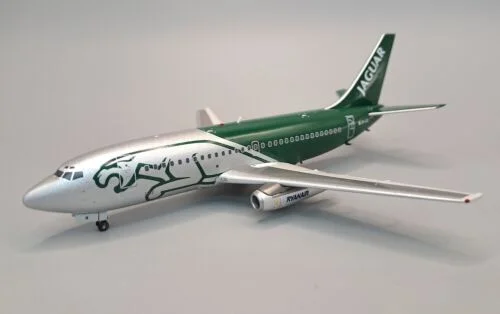The Boeing 737 is an American short- to medium-range twinjet narrow-body airliner. Originally developed as a shorter, lower-cost twin-engine airliner derived from Boeing’s 707 and 727, the 737 has developed into a family of ten passenger models with capacities from 85 to 215 passengers. The 737 is Boeing’s only narrow-body airliner in production, with the 737 Next Generation (-700, -800, and -900ER) variants currently being built. Production has also begun on the re-engined and redesigned 737 MAX, which is set to enter service in 2017.
Originally envisioned in 1964, the initial 737-100 made its first flight in April 1967 and entered airline service in February 1968 at Lufthansa. Next, the lengthened 737-200 entered service in April 1968. In the 1980s Boeing launched the -300, -400, and -500 models, subsequently referred to as the Boeing 737 Classic series. The 737 Classics added capacity and incorporated CFM56 turbofan engines along with wing improvements.
In the 1990s, Boeing introduced the 737 Next Generation, with multiple changes including a redesigned, increased span laminar flow wing, upgraded “glass” cockpit, and new interior. The 737 Next Generation comprises the four -600, -700, -800, and -900 models, ranging from 102 ft (31.09 m) to 138 ft (42.06 m) in length. Boeing Business Jet versions of the 737 Next Generation are also produced.
The 737 series is the best-selling jet commercial airliner in history. The 737 has been continuously manufactured by Boeing since 1967 with 9,335 aircraft delivered and 4,452 orders yet to be fulfilled as of December 2016. Assembly of the 737 is performed at the Boeing Renton Factory in Renton, Washington. Many 737s serve markets previously filled by 707, 727, 757, DC-9, and MD-80/MD-90 airliners, and the aircraft currently competes primarily with the Airbus A320 family. As of 2006, there were an average of 1,250 Boeing 737s airborne at any given time, with two departing or landing somewhere every five seconds.
- Dimensions: W14.2 x L15.3 x H5.6 cm

